Mikoyan-Gurevich
Zh
I-270
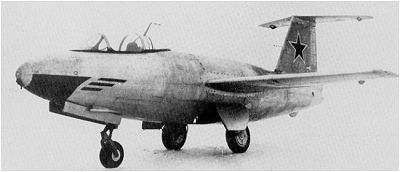
I-270
Mikoyan-GurevichZh I-270 |
 I-270 |
In 1945 the Soviet Union issued a requirement for a rocket-powered point-defense interceptor, similar in concept to the German Messerschmitt Me 163 Komet. The Mikoyan-Gurevich OKB responded with the Zh *, which received the military designation I-270. The design was influenced by the capture of a Junkers Ju 248 (Messerschmitt Me 263), but unlike the Me 163 and Ju 248, the I-270 was a fairly conventional design. It did have the distinction of being the first Soviet aircraft to be equipped with an ejection seat, and also utilized a near-laminar flow wing and a pressurized cockpit. The powerplant consisted of a bi-propellant RD-2M-3V rocket, designed by L. Dushkin and V. Glushko, with two chambers: the main chamber provided 2,315 pounds of thrust, and a smaller cruise chamber gave 882 pounds of thrust for a total of 3,197 pounds. Armament consisted of two 23 mm cannon and eight RS-82 rockets, installed only in the second prototype.
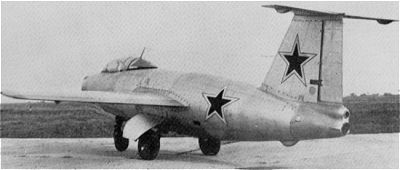
The first prototype, which had ballast in place of the never-installed powerplant, was used for unpowered flight trials in 1946, being towed by a Tupolev Tu-2. One source does state, contrary to this, that the first prototype never actually flew and was destroyed during ground testing. The second I-270 had the rocket installed, and made its first powered flight in early 1947. It was apparently scrapped after a crash upon landing after a subsequent flight. The first aircraft had to make a wheels-up landing shortly thereafter, and was never repaired. The I-270's short endurance and high wing loading when fuelled were not encouraging to further development, and the crashes only provided further reason to halt the program. Development of the surface-to-air missile rendered the somewhat dangerous, inefficient rocket-powered point-defense interceptor effectively obsolete.
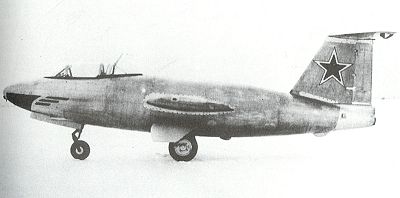
Timeline
| Specifications | I-270 |
| Designer(s) | ? |
| Mission Type | Point-defence interceptor |
| Powerplant | 1 x 3,197 lb (1,450 kg) thrust Dushkin-Glushko RD-2M-3V or -3W bi-propellant two-chamber rocket |
| Dimensions | |
| Span | 29 ft 5 in (7.75 m) |
| Length | 29 ft 3 in (8.91 m) |
| Height | 10 ft 1.25 in (3.08 m) |
| Wing area | 129.17 sq ft (12.00 m2) |
| Weights | |
| Empty | 3,408 lb (1,546 kg) |
| Loaded | 9,083 lb (4,120 kg) |
| Gross | -- |
| Max | -- |
| Performance | |
| Max speed | 621 mph @ sl (1,000 km/hr) 559 mph @ 16,404 ft (900 km/hr @ 5,000 m) 577 mph @ 32,808 ft (928 km/hr @ 10,000 m) 582 mph @ 49,215 ft (936 km/hr @ 15,000 m) |
| Cruise speed | -- |
| Initial climb rate | -- |
| Time to 32,810 ft (10,000 m) | 2.37 min |
| Time to 49,215 ft (15,000 m) | 3.03 min |
| Service ceiling | 55,775 ft, 57,750 ft or 59,055 ft (17,000 m, 17,602 m or 18,000 m) |
| Range | -- |
| Endurance | Both rocket chambers: 4.25 min Cruise chamber only (882 lb [400 kg] thrust): 9.05 min |
| Armament (installed in second prototype only) |
2 x 23 mm NS-23 with 40 rpg in fuselage 8 x RS-82 rockets under wings |
| Crew | One |
| User | USSR |
| Number built | Two (Zh-1, Zh-2) |
| Construction Numbers | ? |
| Serial Numbers | ? |
| Test Pilot | V. N. Yuganov |
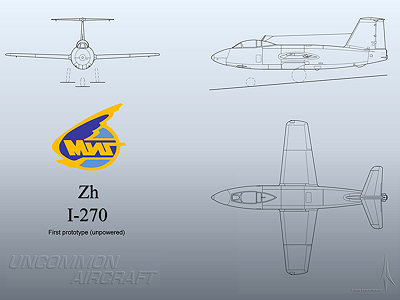 I-270, first prototype |
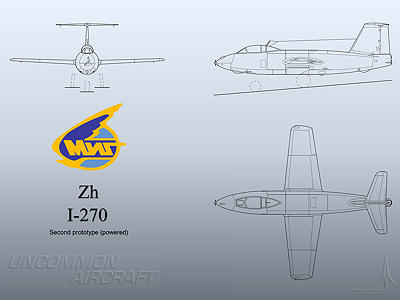 I-270, second prototype |
I-270 prototypes comparison
 In addition to having a rocket engine installed, the second I-270 prototype also had armament installed and an enlarged nose wheel. |
Profiles
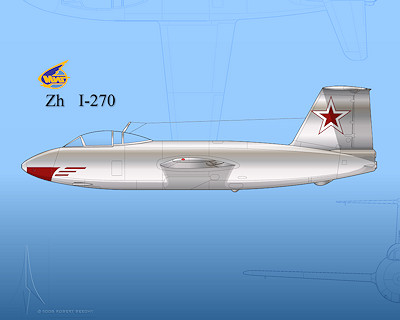 Mikoyan-Gurevich Zh, I-270; unpowered first prototype |
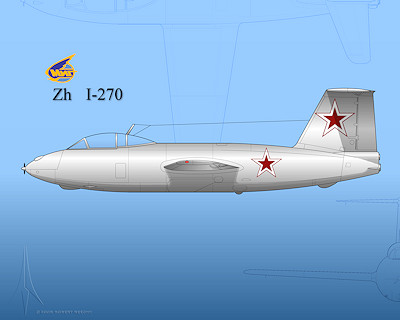 Mikoyan-Gurevich Zh, I-270; second prototype |
Additional Information
Web Links
Sources
| [ | Home | | | About | | | Contact | | | Top | ] |
© 1997-2011, Robert Beechy
http://fire.prohosting.com/uncommon/aircraft/i-270/index.html
Originally posted 29 May 1998
Modified: 12/27/2017